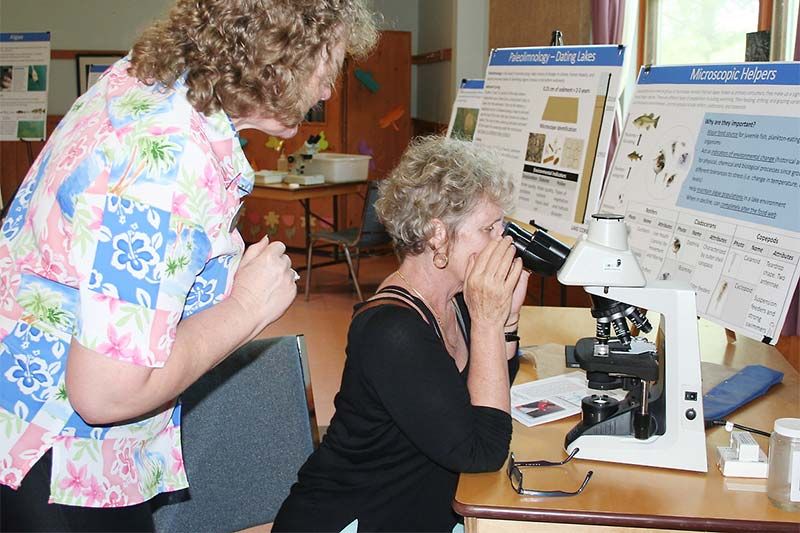Craig Bakay | May 31, 2017
The Cataraqui Region Conservation Authority welcomed the public to its Little Cataraqui Creek Conservation Area facility last Sunday to present its first ever Lake Assessment Report and perhaps generate some interest in people getting involved.
There are 170 named lakes in the CRCA’s jurisdiction of which they now have report sheets on 45. The reports as well as the overview are available on CRCA website and include such information as physical features, bathymetry, phosphorus levels, calcium levels, pH levels, oxygen levels, fisheries data, species at risk, invasive species, visibility and where the lake sits on the oligotrophic-mesotrophic-eutrophic (ie water quality) scale. (Just Google CRCA lake reports.)
“Reported lakes within the Cataraqui region are generally healthy with suitable conditions to support aquatic Communities, resist changes in pH, and adapt to external stresses such as changes in shoreline habitat,” the report says. “However, eight lakes within the region have eutrophic conditions and over 40 per cent have been invaded by zebra mussels.”
Eutrophic conditions means that the water body is enriched with nutrients, which induces growth of plants and algae and may result in oxygen depletion. While it can occur naturally, in current times it is often induced by the discharge of phosphate-containing detergents, fertilizers or sewage.
Environmental Technologist Holly Evans said the “seeds of the idea” for the lake reports sprouted from all the calls they were fielding about lakes on a variety of topics.
“Technologists are always getting phone calls,” she said. “Everything from ‘I saw this weird thing on my lake’ to ‘I’m thinking of buying a property on this lake’ to ‘where can I go fishing for this kind of fish.’
“We wanted to put the answers all in one place online.”
For example, the online fact sheet on Loughborough Lake will tell you where it is (including GIS coordinates), where the boat launches are, surface area, volume, maximum depth, average depth and length of shoreline for both the east and west basins. It also features a ‘lake characteristics’ section outlining the various differences between the east and west basins as well as dams and nearby lakes.
But there’s also another reason for inviting the public and getting the word out about lake reports. They’d like some help both for lakes yet to have lake reports as well as ongoing data collection.
With the growing trend towards ‘citizen science,’ the CRCA would like to recruit some ‘partners’ to assist in various forms of data collection.
“The CRCA values the lakes in our region and we’d like to give you more information about them,” Evans said. “But we need the information (and) the best way to gather information is to engage people and build partnerships.
“We’re reaching out.”
They’re interested in just about any aspect of a lake, from temperature readings to observing wildlife. They have kits they will share as well as information on how to use them and gather information.
They’re also interested in any sort of information families may have collected over the years.
“If you live on a lake, chances are you’ve recorded when the ice went in and when it went out every year,” she said. “We want to move that information from the binder and get it online.”
More Stories
- Latest CUPW Job Action Stops Postal Delivery Of The Frontenac News Forcing Alternate Plans
- Opponents of Barbers Lake Gravel Pit Pack Ag Hall in McDonalds Corners
- Bobsleigh Olympian Jay Dearborn At Mikes Pizza In Sydenham
- The Loins Club Of and O'Lakes Roar
- North Frontenac Back Roads Studio Tour - September 27 and 28
- Sunday Market Vendors Give Back
- George Street Work As Town Hall Renovation Nears Completion
- One Way Street Plan Hits A Dead End - Central Frontenac Council, September 9
- Global Gardening
- No Winner Yet in Catch The Ace But Fundraising Target Met

